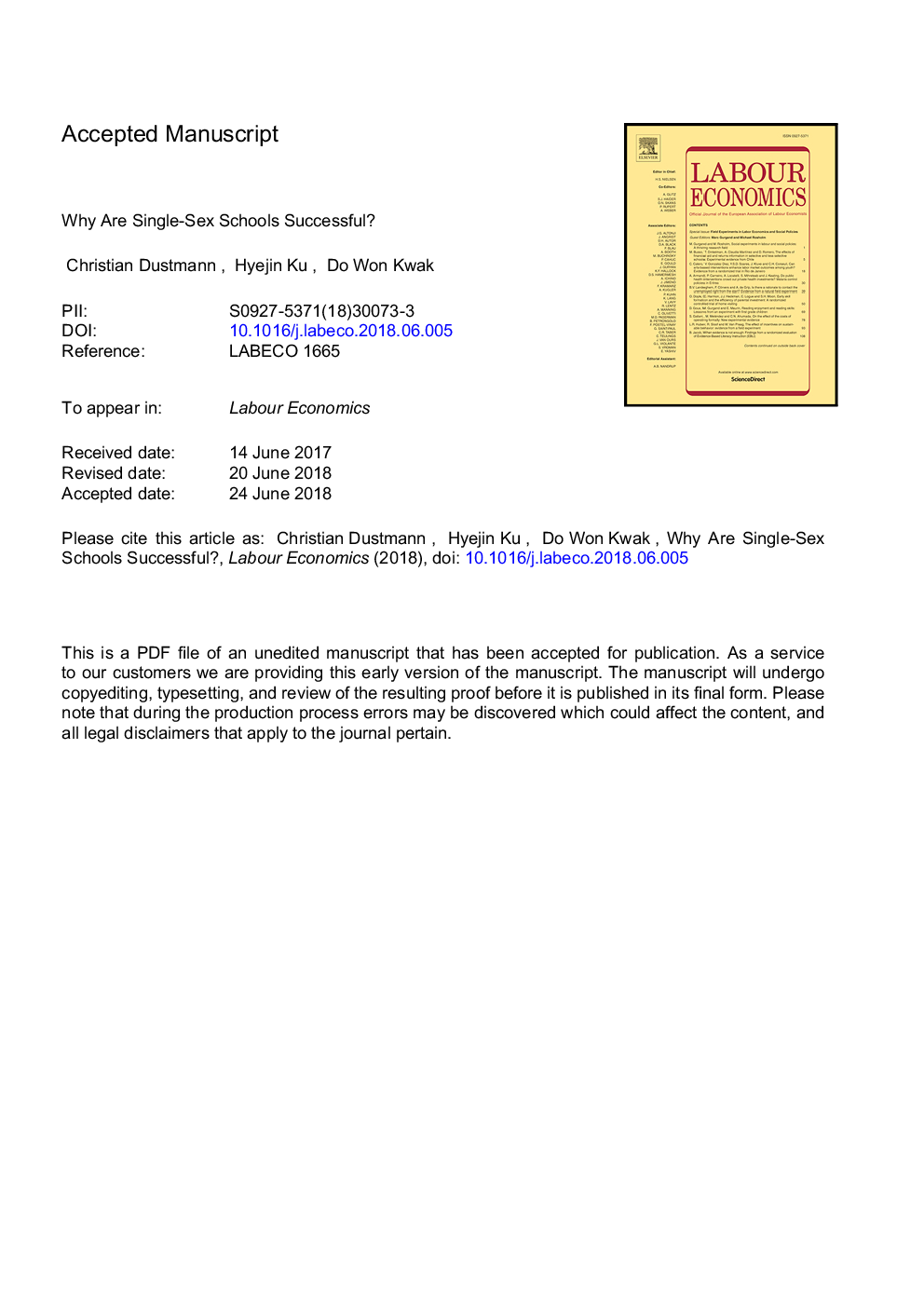| Article ID | Journal | Published Year | Pages | File Type |
|---|---|---|---|---|
| 9953062 | Labour Economics | 2018 | 78 Pages |
Abstract
We exploit two unusual policy features of academic high schools in Seoul, South Korea-random assignment of pupils to high schools within districts and conversion of some existing single-sex schools to the coeducational (coed) type over time-to identify three distinct causal parameters: the between-school effect of attending a coed (versus a single-sex) school; the within-school effect of school-type conversion, conditional on (unobserved) school characteristics; and the effect of class-level exposure to mixed-gender (versus same-sex) peers. We find robust evidence that pupils in single-sex schools outperform their counterparts in coed schools, which could be due to single-sex peers in school and classroom, or unobservable school-level covariates. Focusing on switching schools, we find that the conversion of the pupil gender type from single-sex to coed leads to worse academic outcomes for both boys and girls, conditional on school fixed effects and time-varying observables. While for boys, the negative effect is largely driven by exposure to mixed-gender peers at school-level, it is class-level exposure to mixed-gender peers that explains this disadvantage for girls.
Related Topics
Social Sciences and Humanities
Economics, Econometrics and Finance
Economics and Econometrics
Authors
Christian Dustmann, Hyejin Ku, Do Won Kwak,
